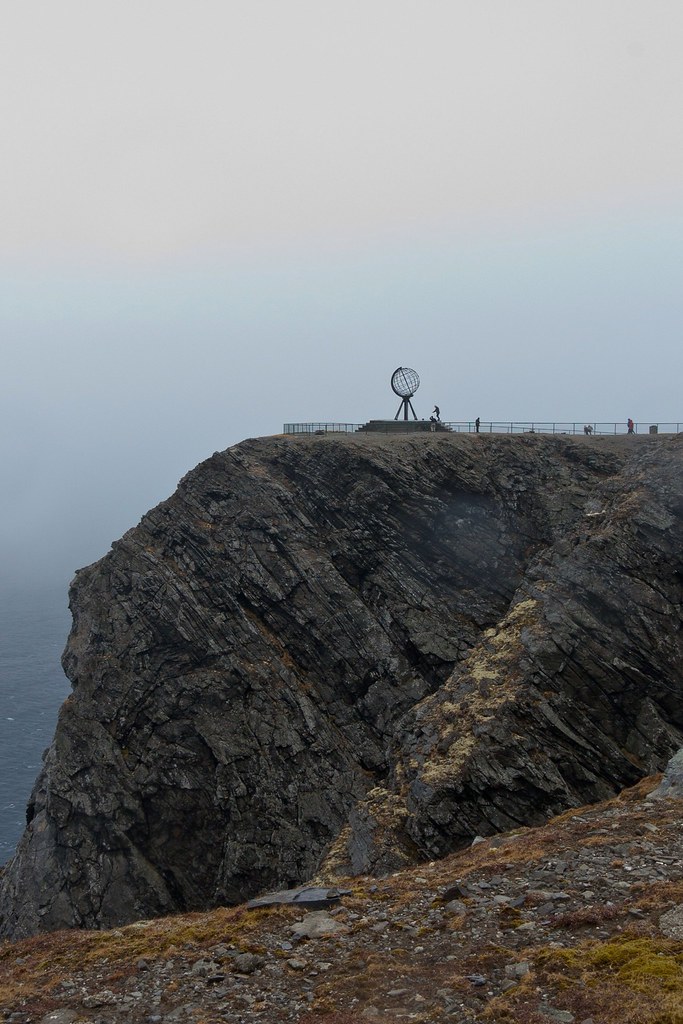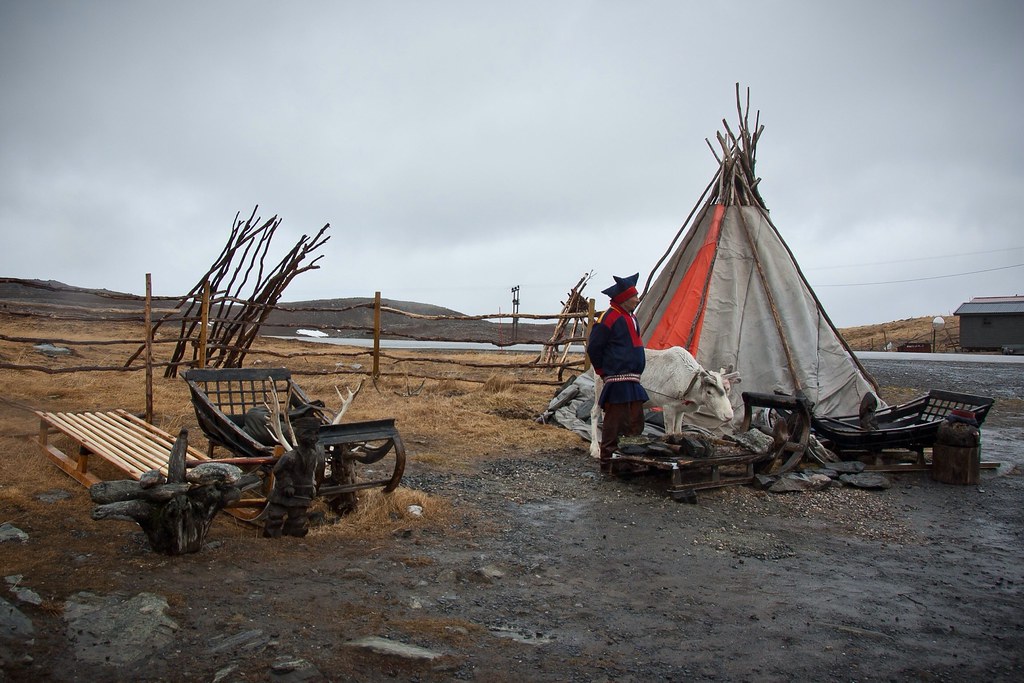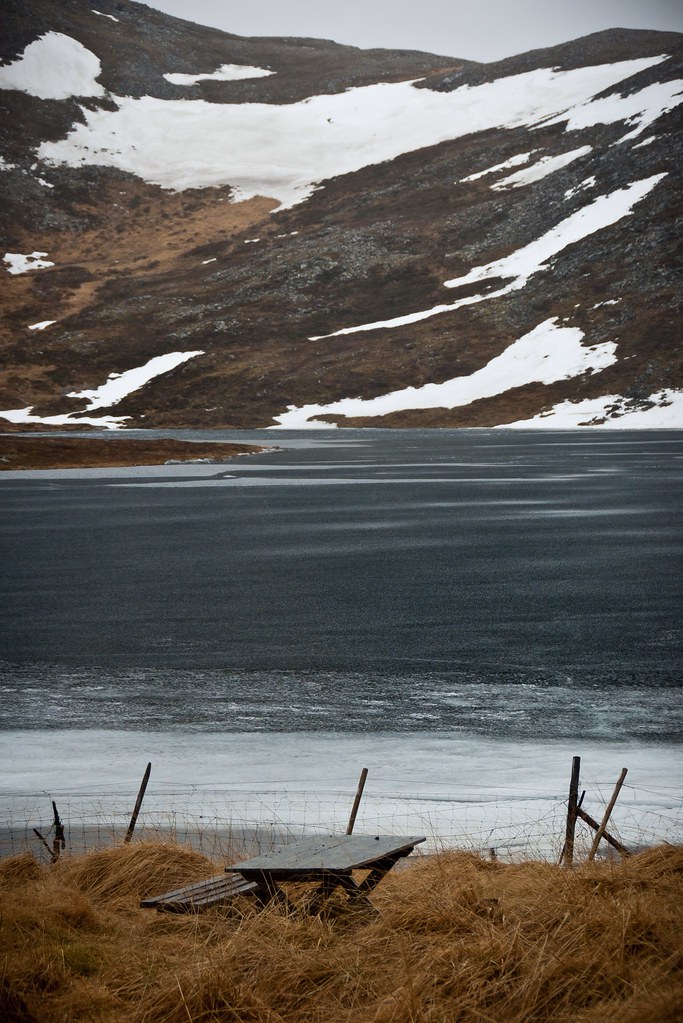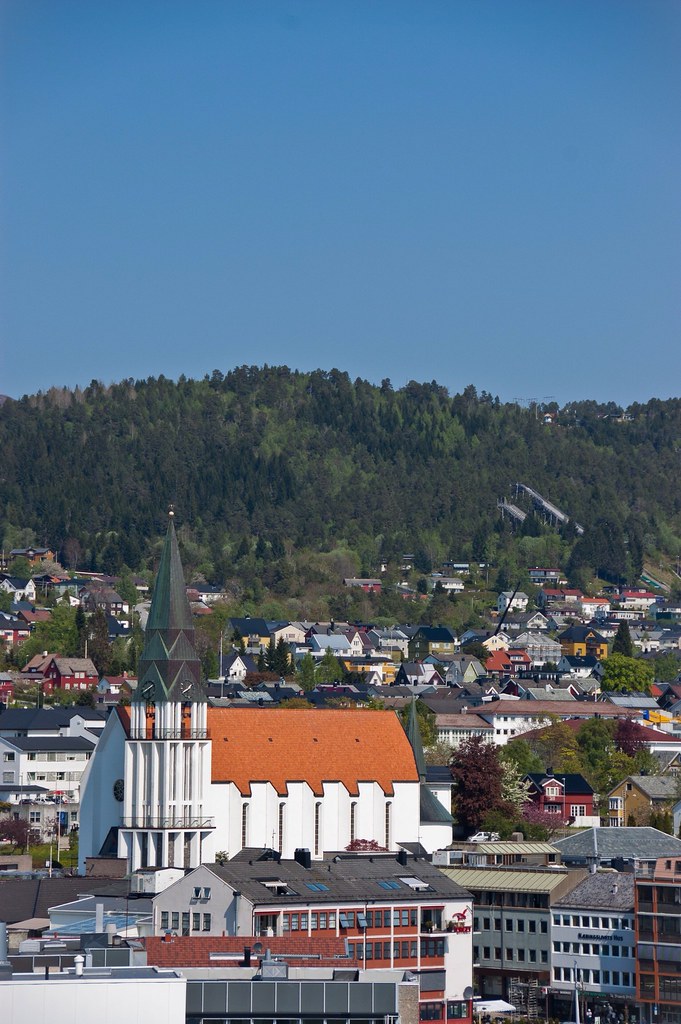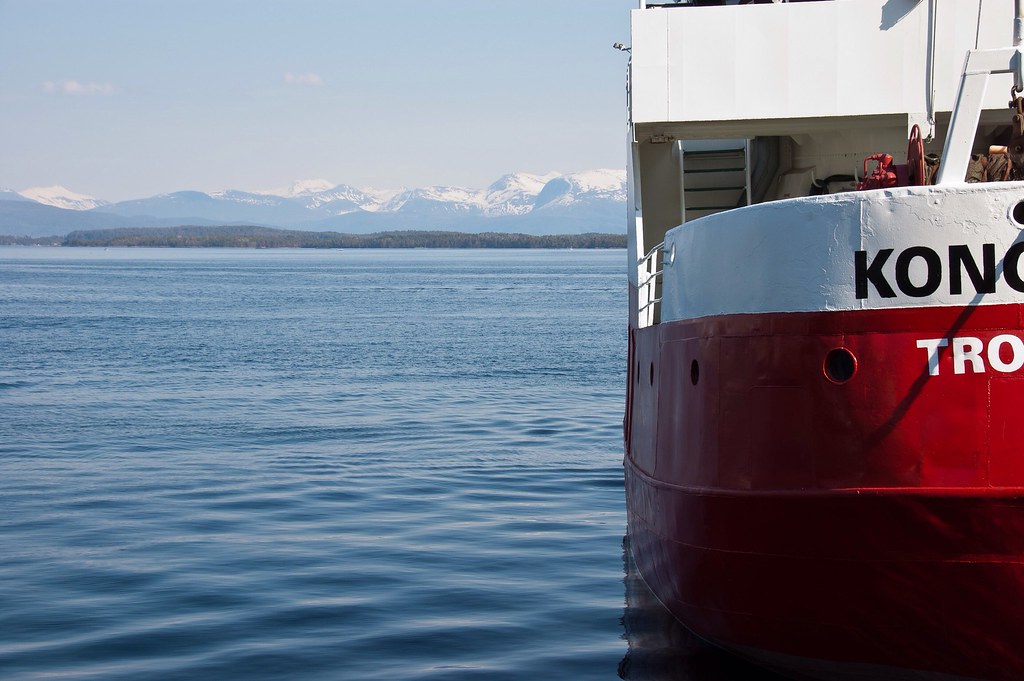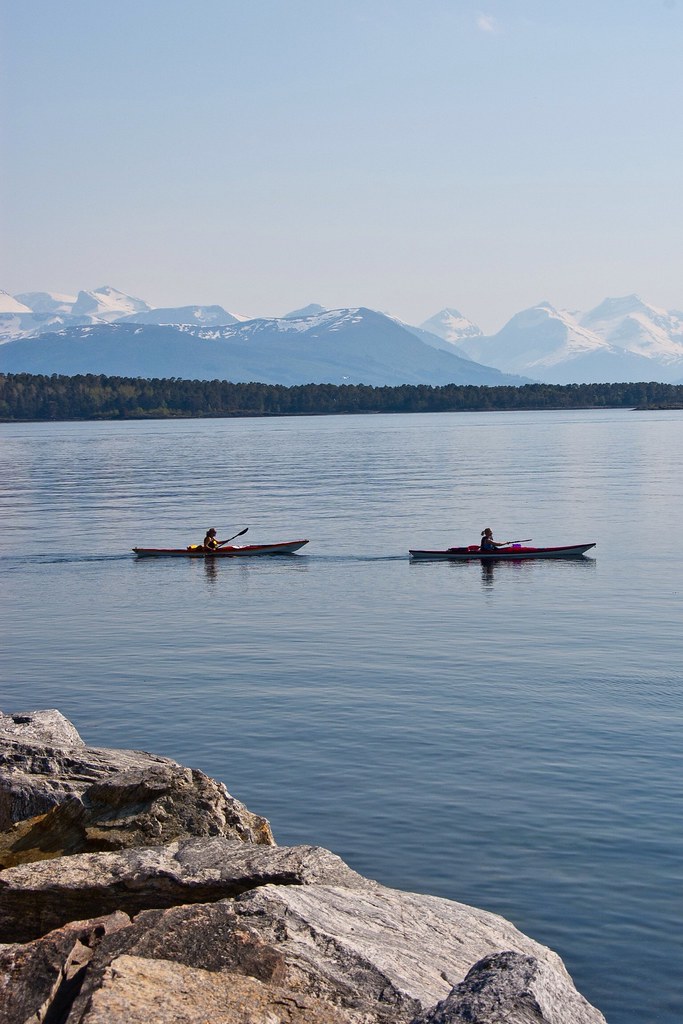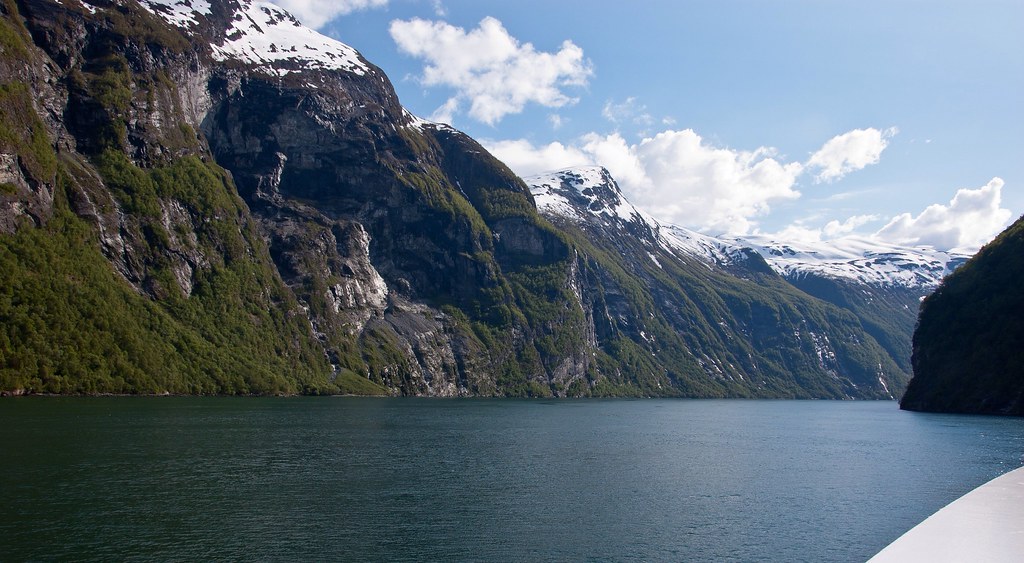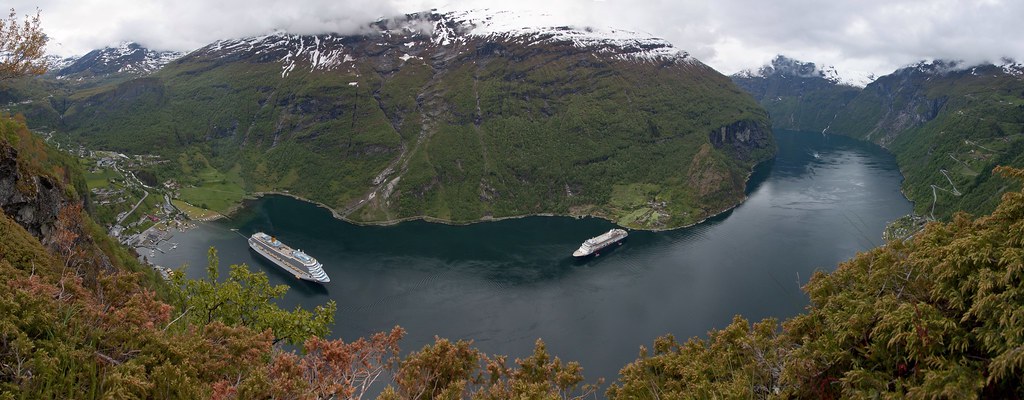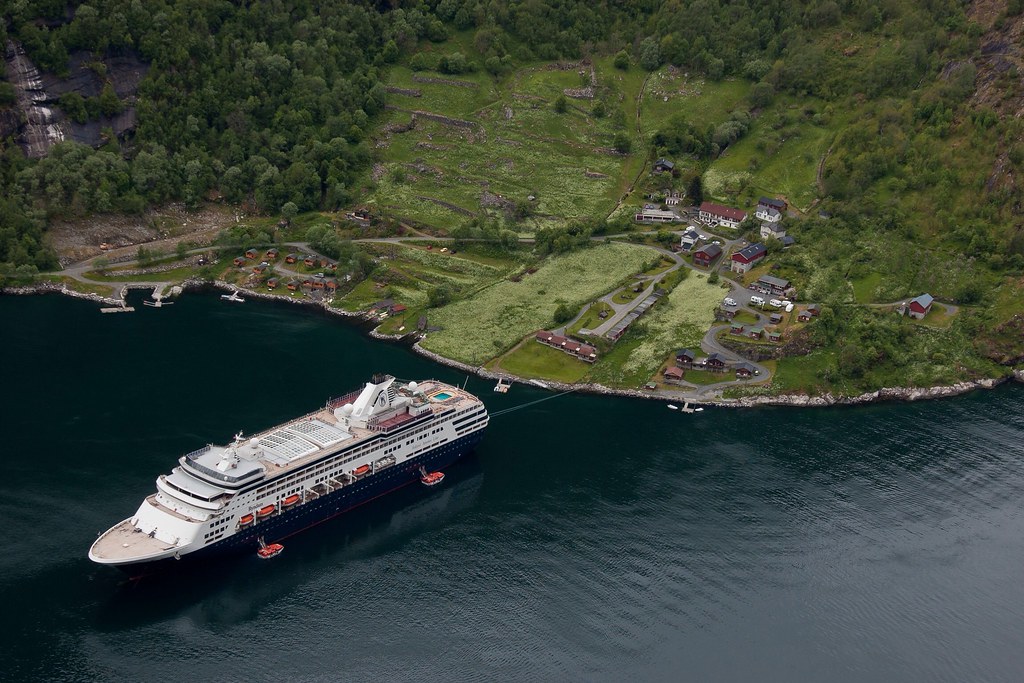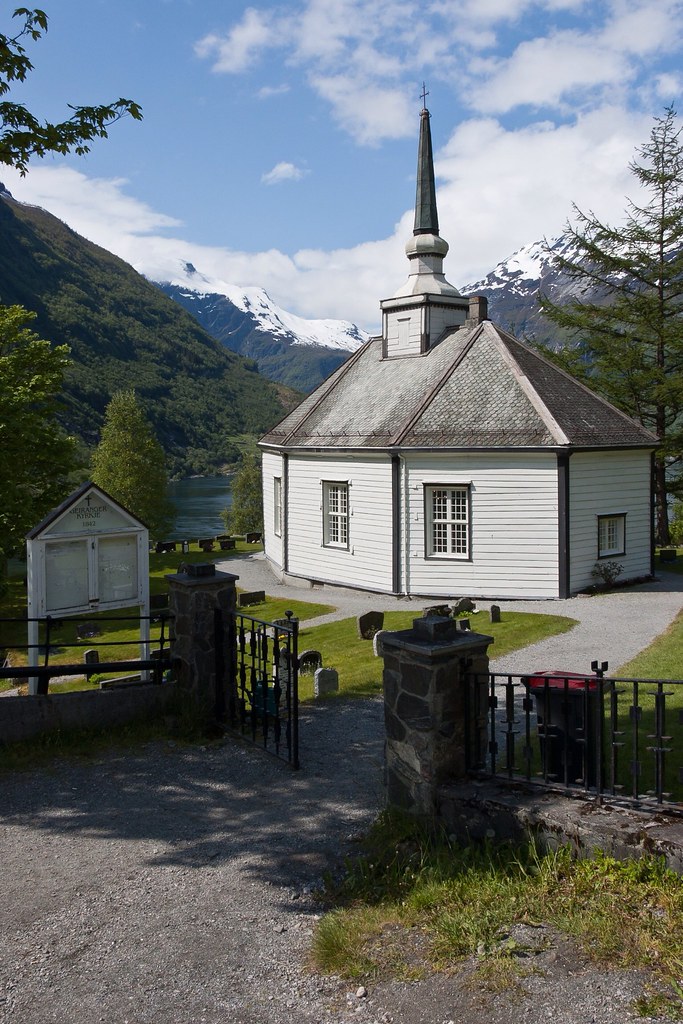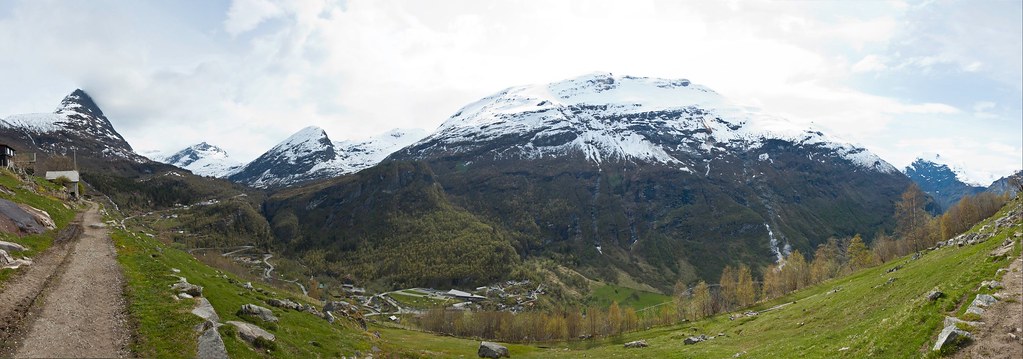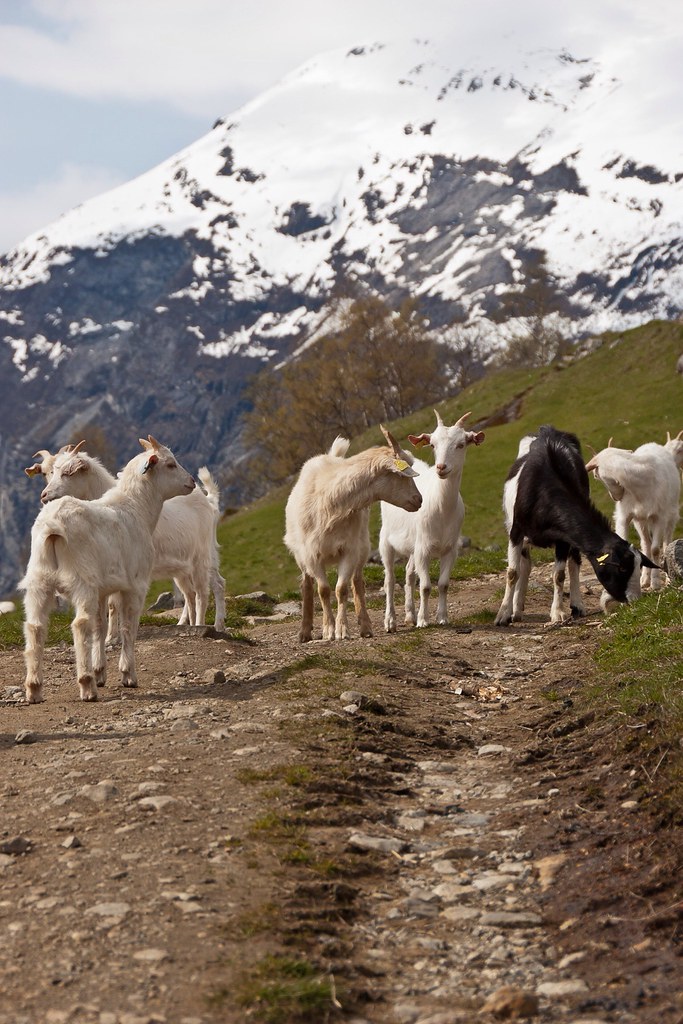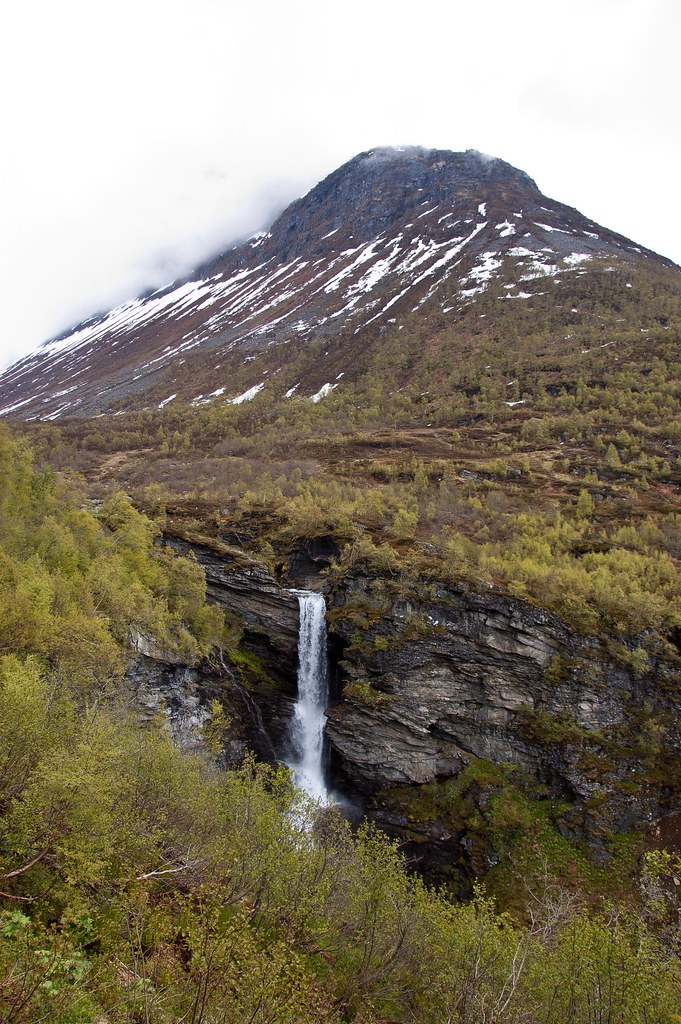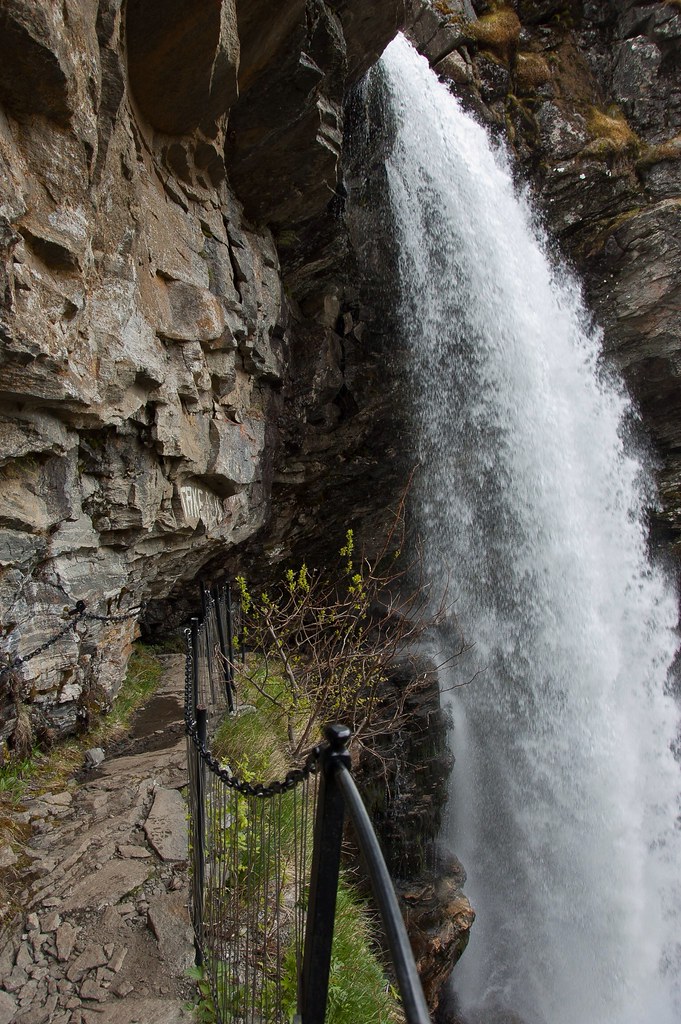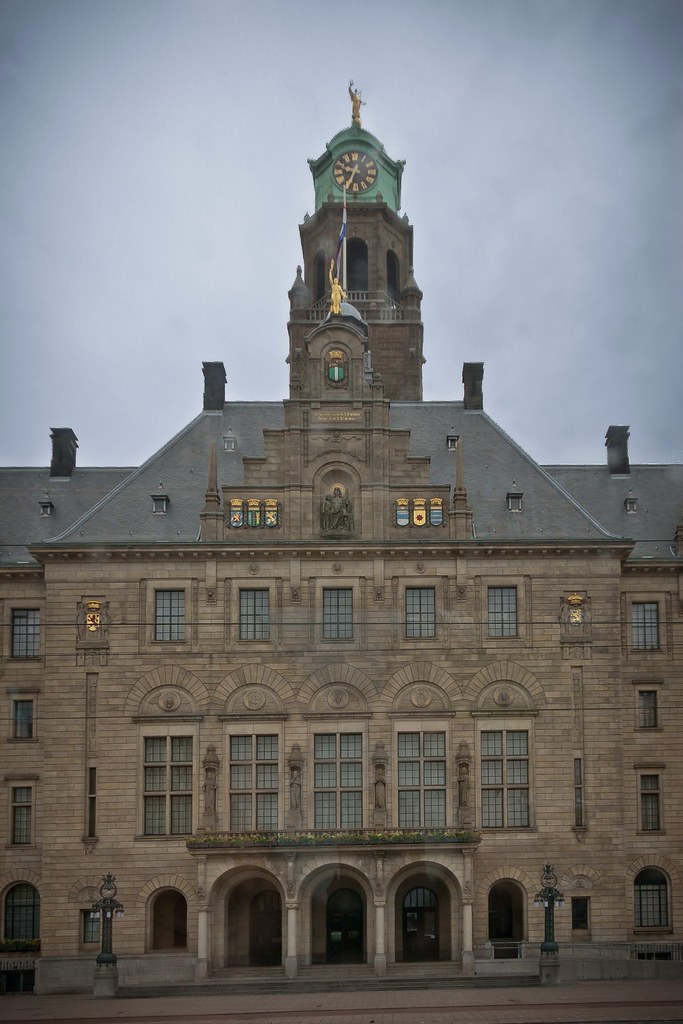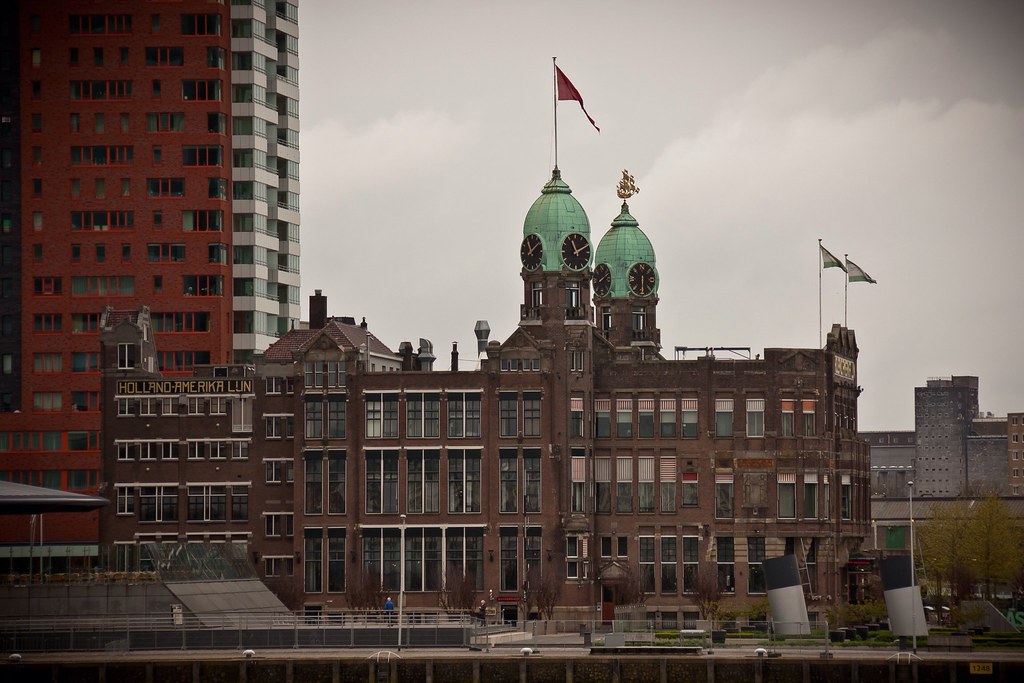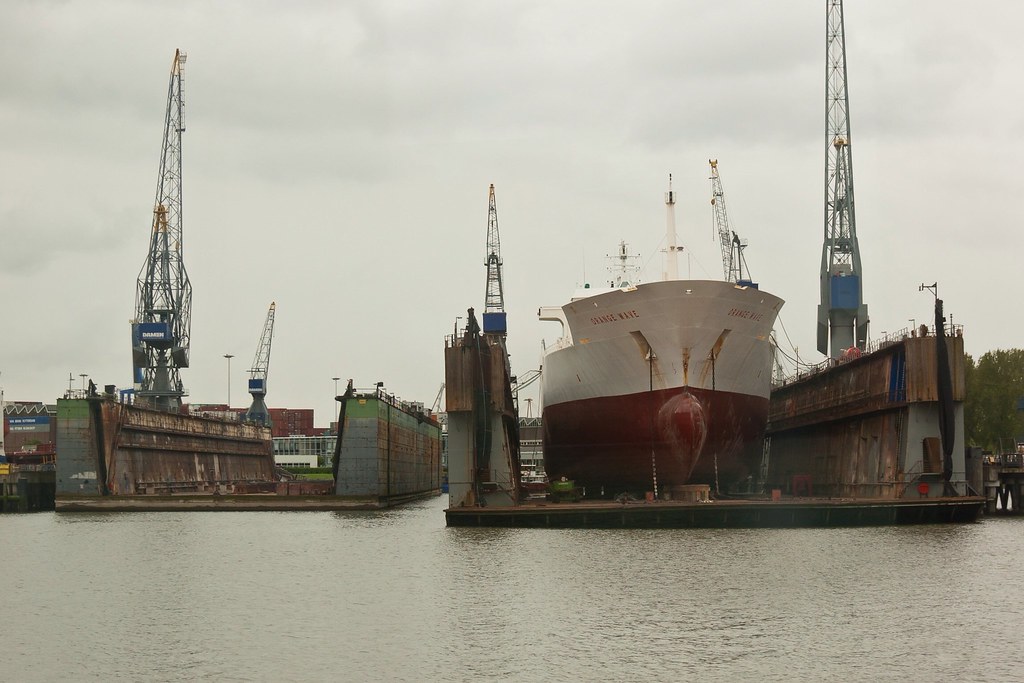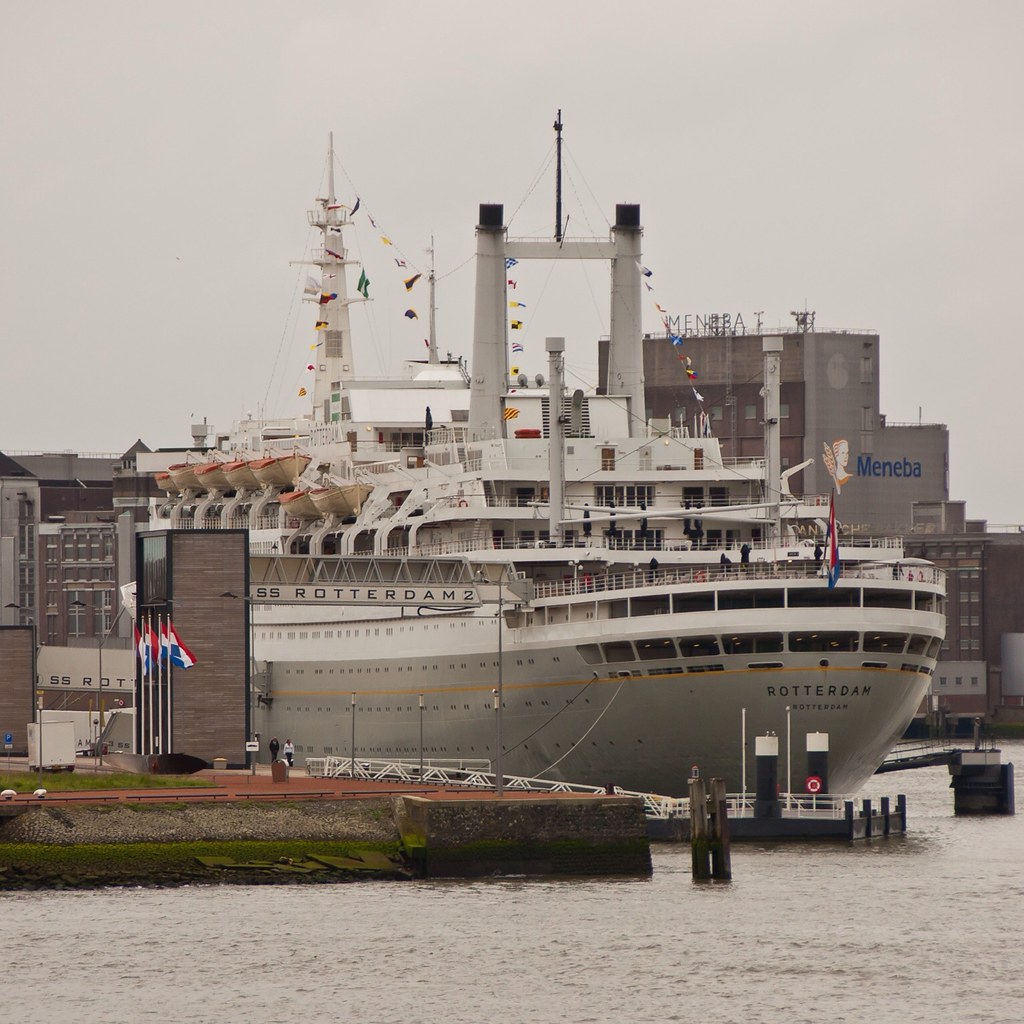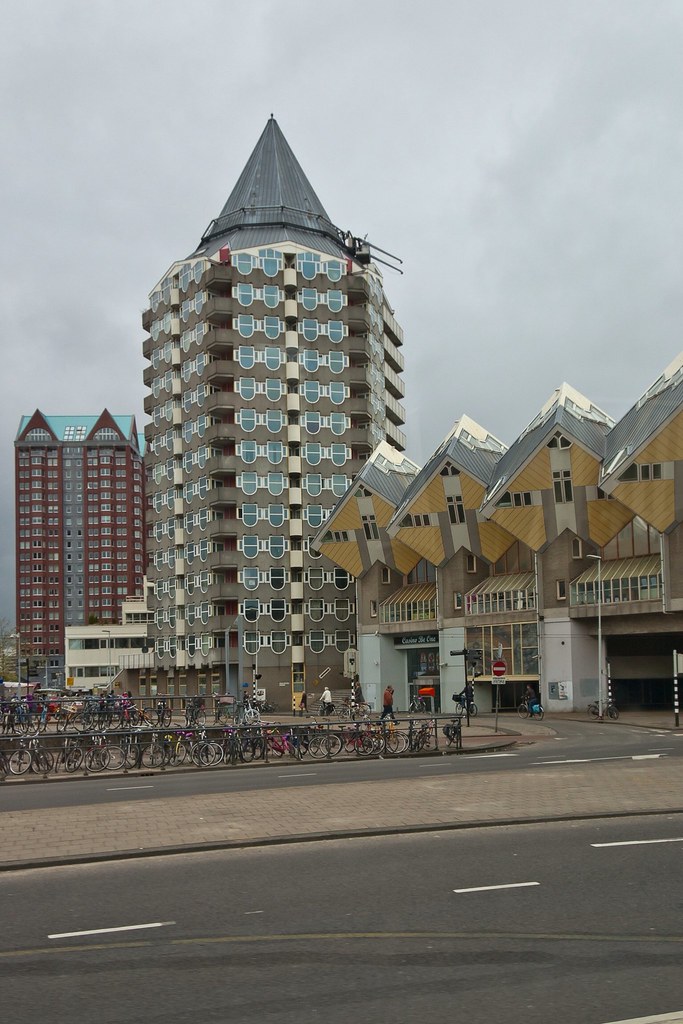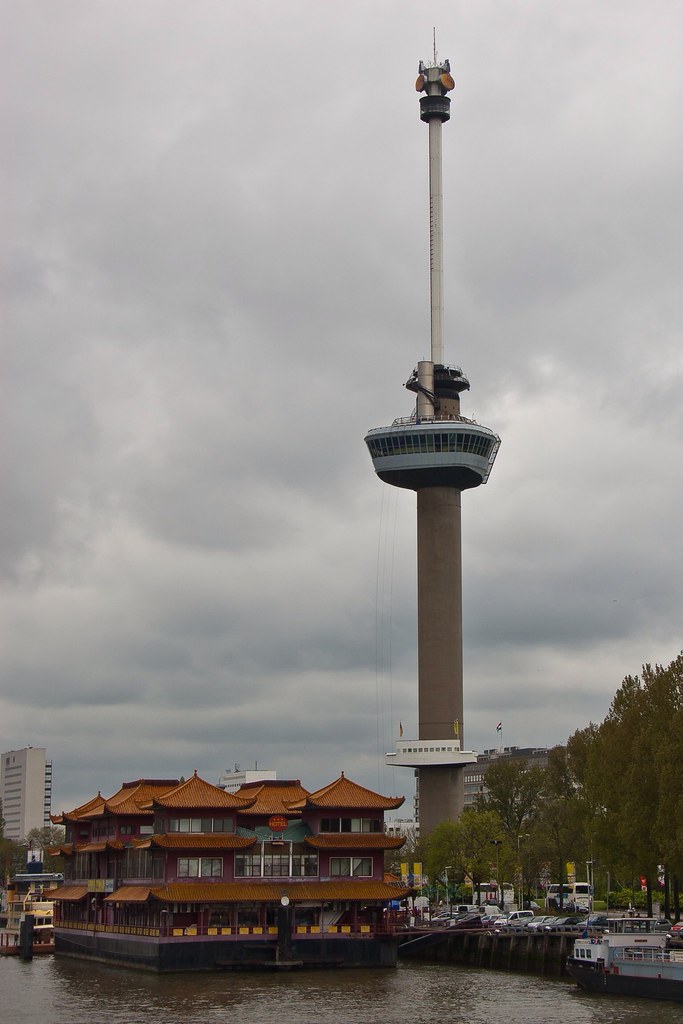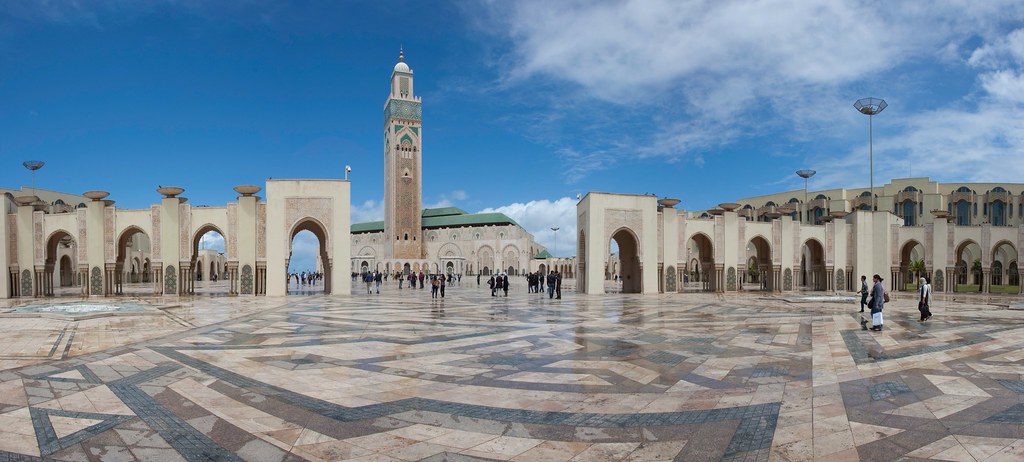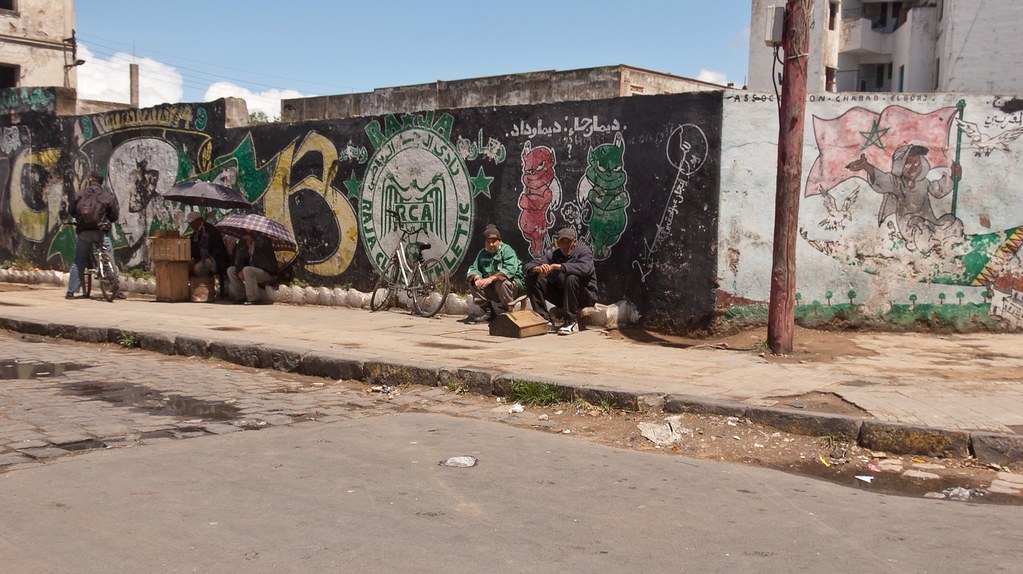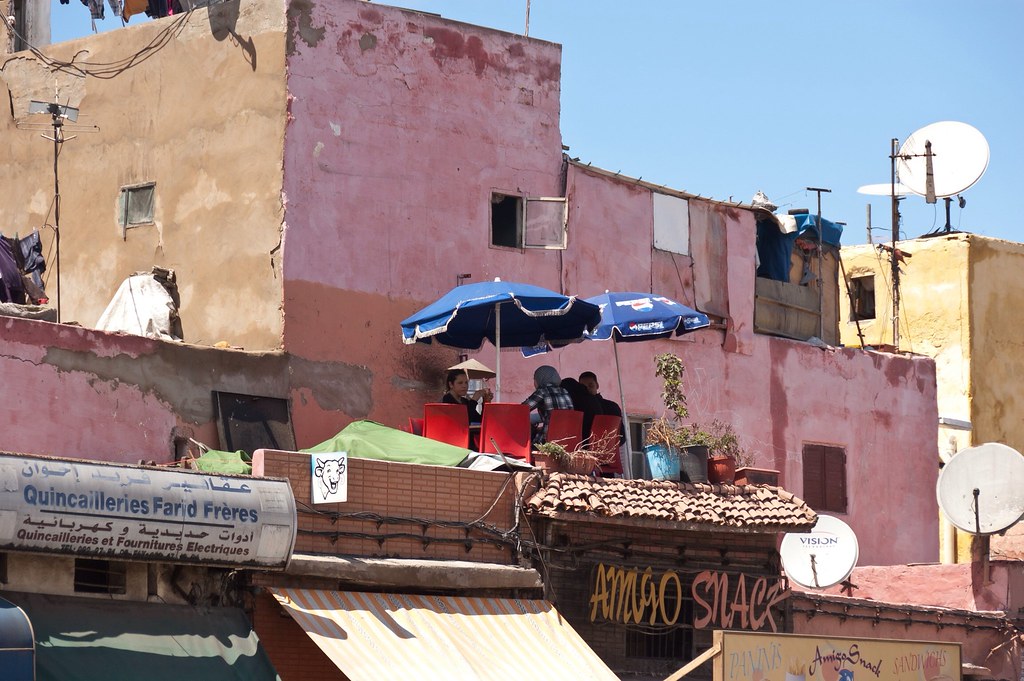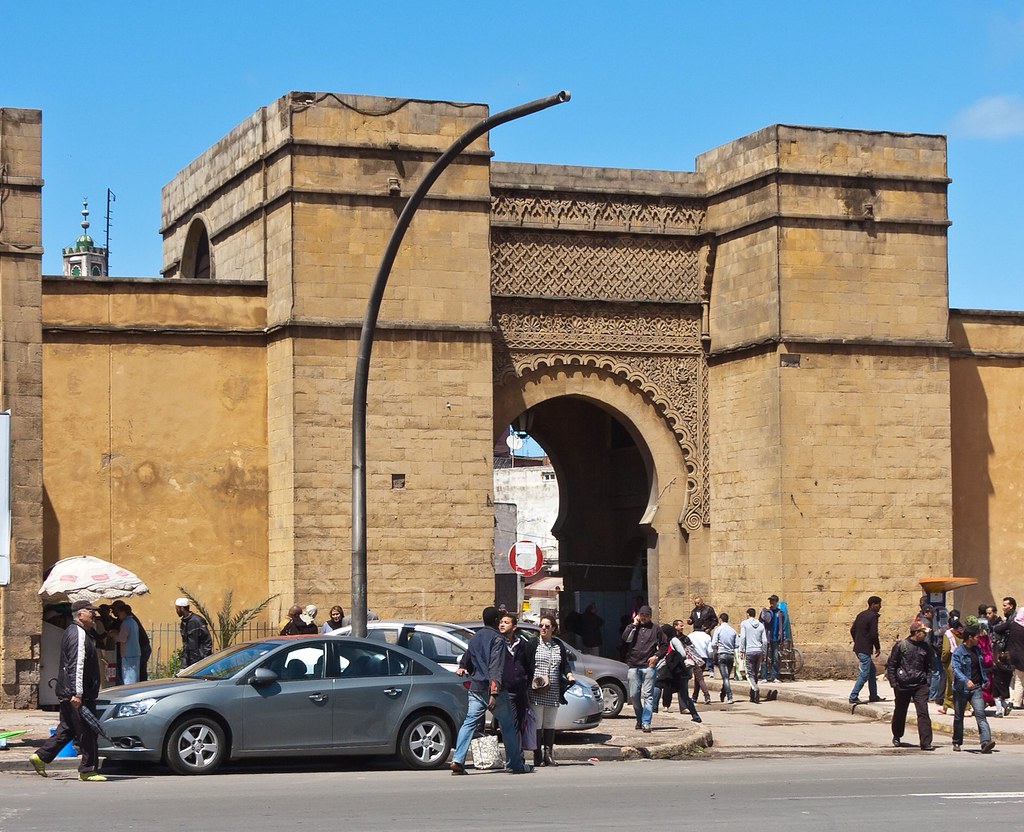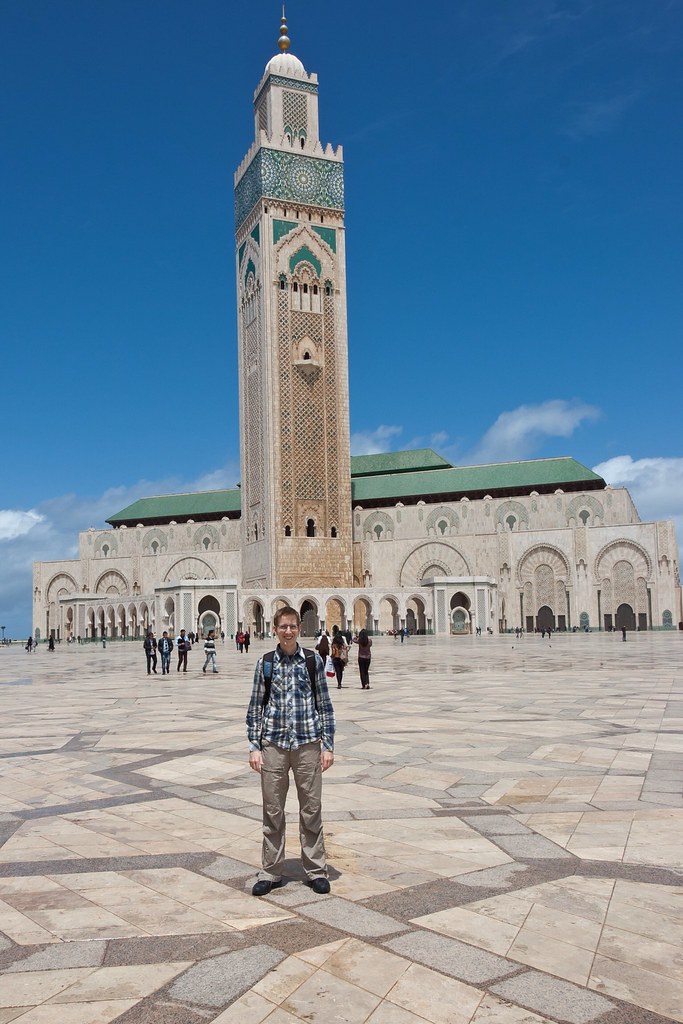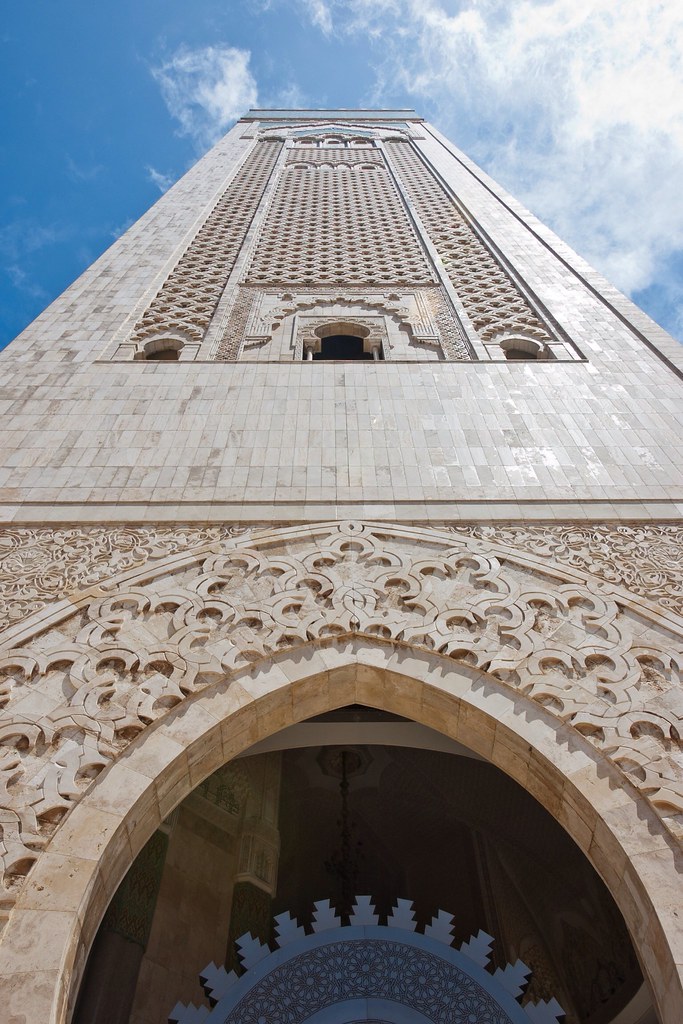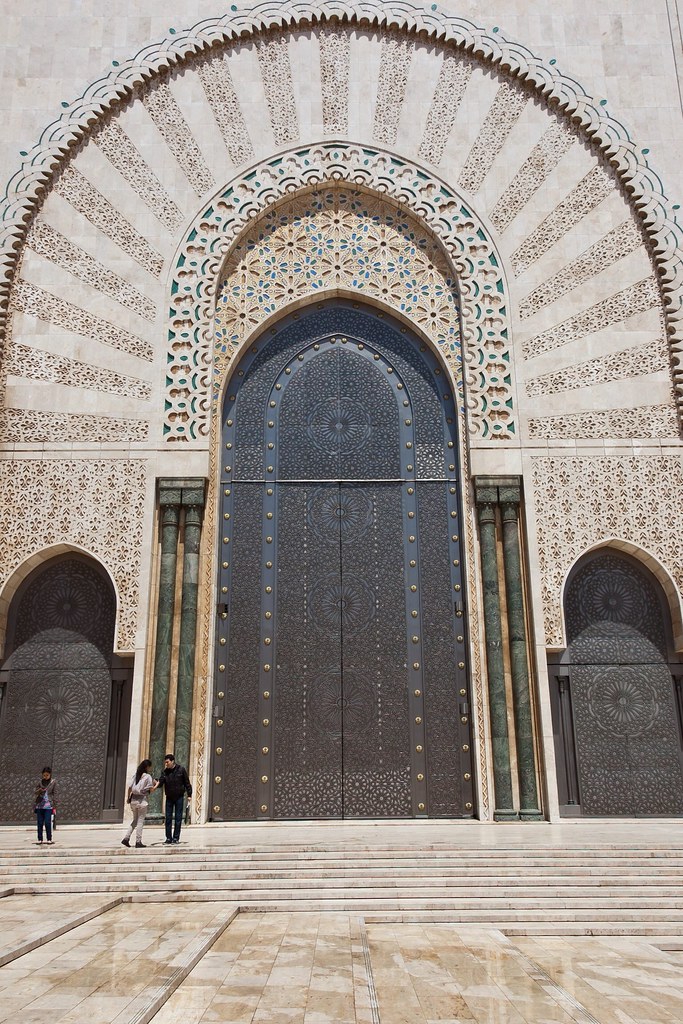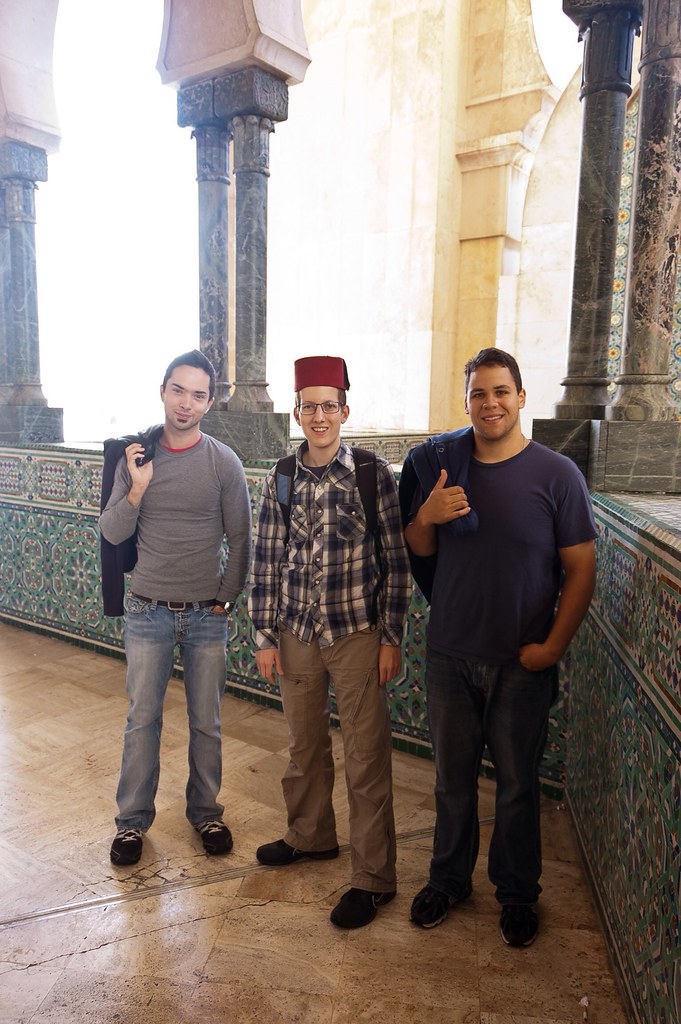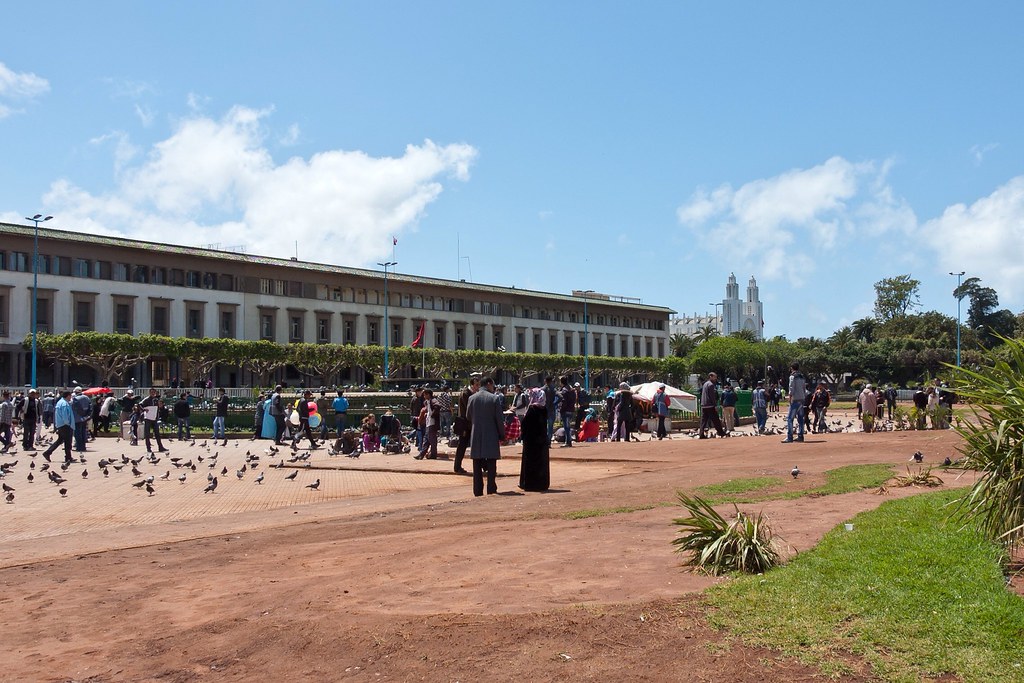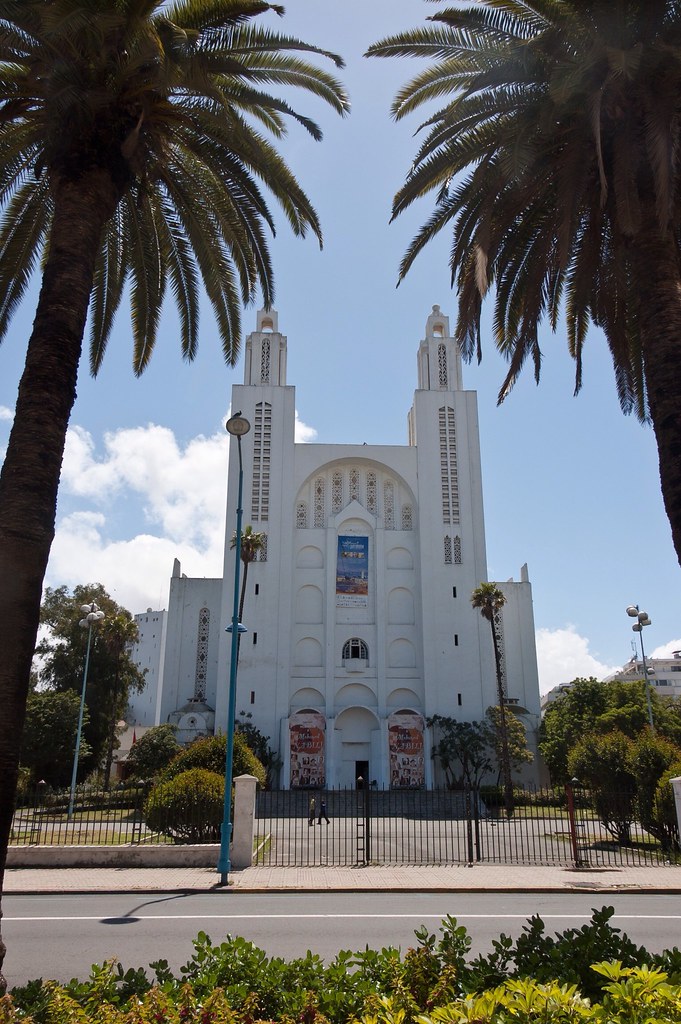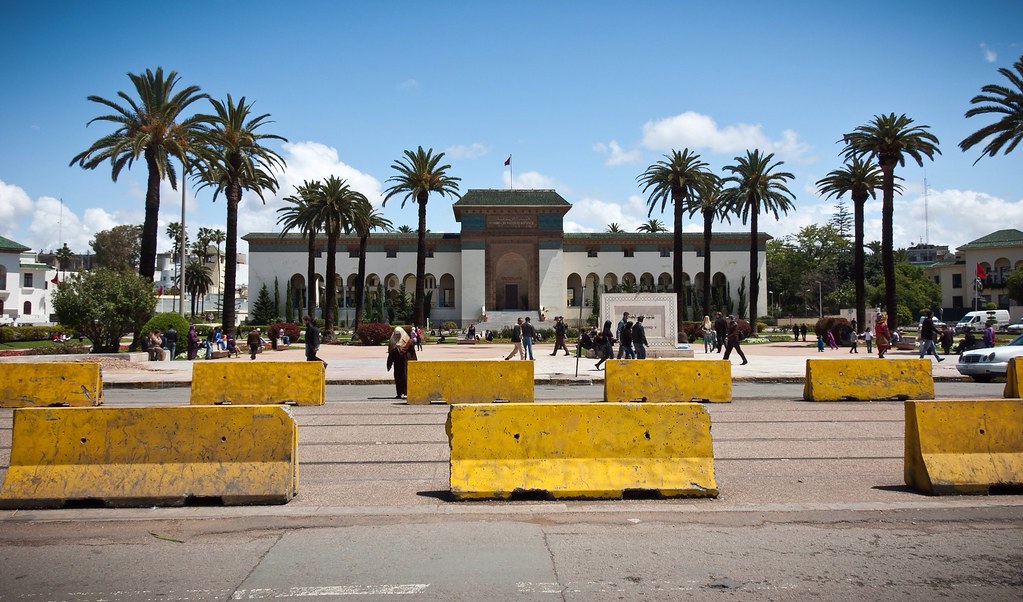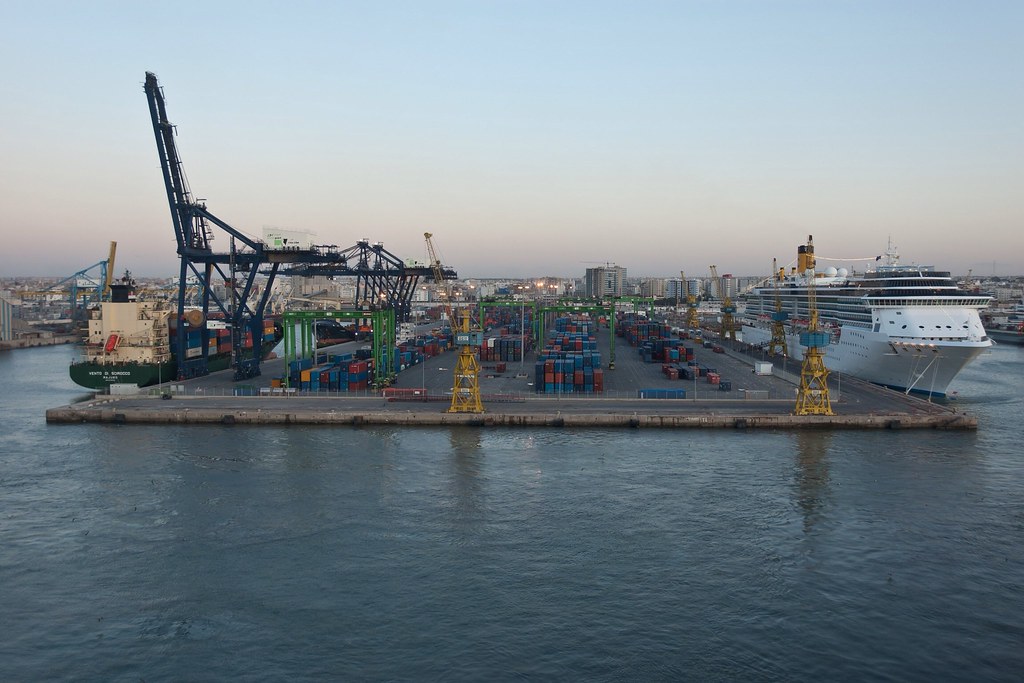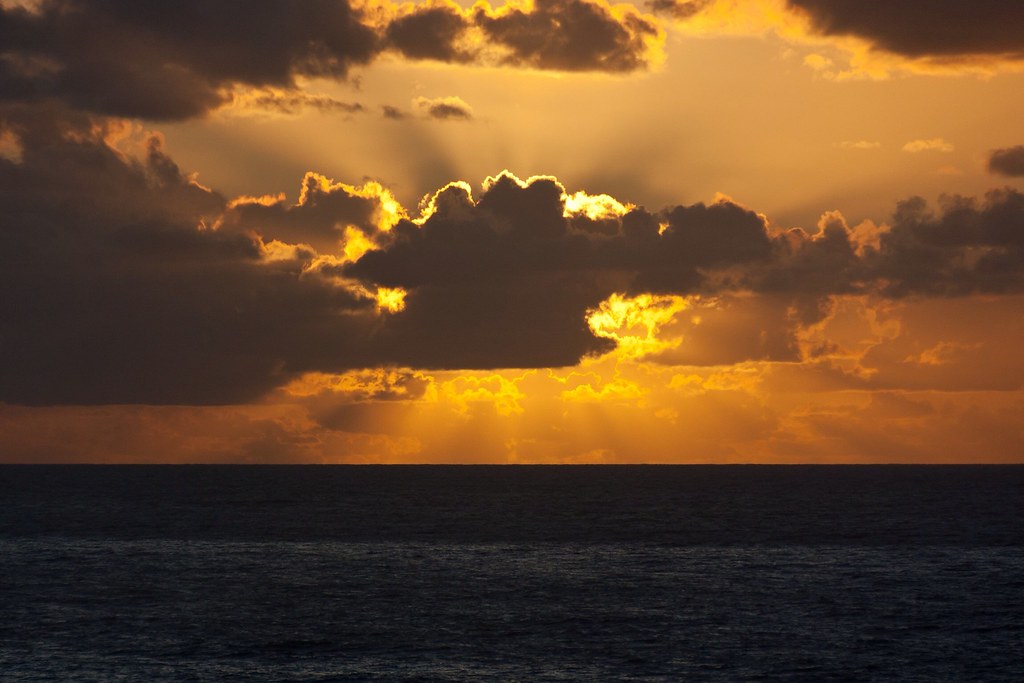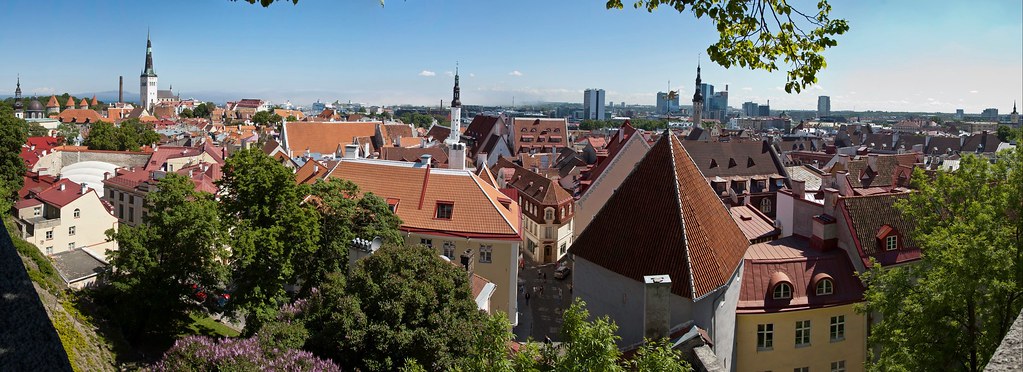
Above: Lower Town of Tallinn with modern skyscrapers in the distance.
Estonia is a country in the Baltic region of Northern Europe and its capital, Tallinn is situated on the northern coast of the country, on the shore of the Gulf of Finland, south of Helsinki, east of Stockholm and west of Saint Petersburg. The Estonians are a Finnic people, and the official language, Estonian, is closely related to Finnish.
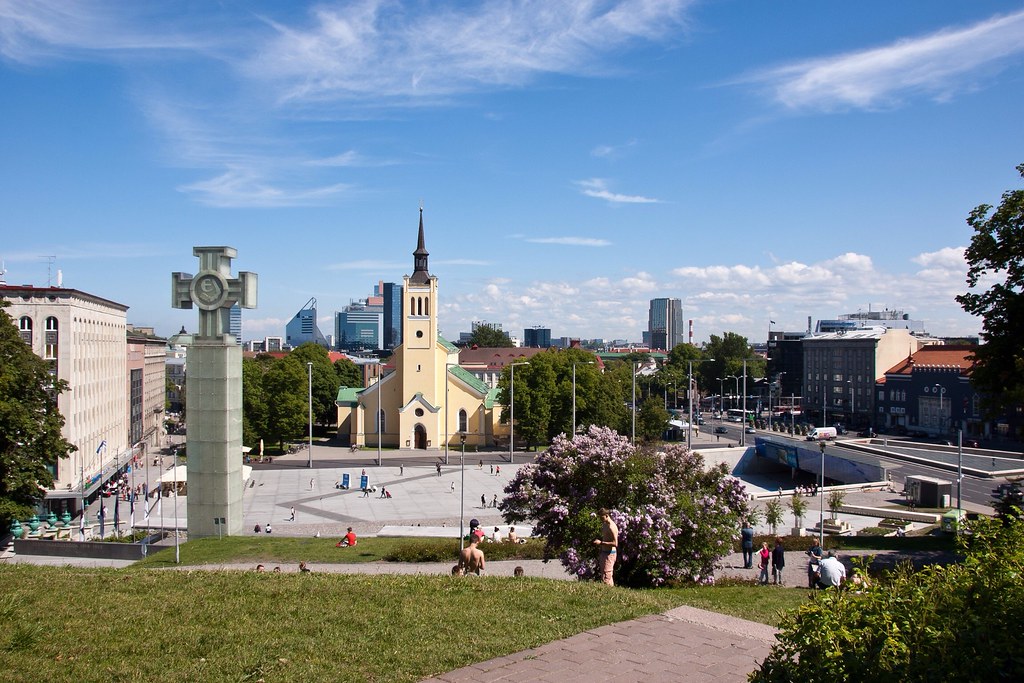
Above: A square in the more modern part of downtown Tallinn.
The country was occupied by both Soviet and Nazi forces during the Second World War. During Soviet rule after the War, more than 20,000 Estonians were forcibly deported either to labour camps or Siberia.

Above: Tallinn Song Festival Grounds (see below).
In 1989, during the 'Singing Revolution', in a landmark demonstration for more independence, a human chain of more than two million people was formed, stretching through Lithuania, Latvia and Estonia. Estonian Song Festivals which began in 1869 and are held in the Tallinn Song Festival Grounds, hold a particular significance now following that peaceful protest for independence.

Above: The view from the city wall with the Baltic sea in the distance.
Estonia's formal independence was declared on 20 August 1991, reconstituting the pre-1940 state. The Soviet Union recognised the independence of Estonia on 6 September 1991 and the last Russian troops left on 31 August 1994. If you have time I would strongly urge you to read more about Estonia's 20th Century history - it is fascinating and heartbreaking.
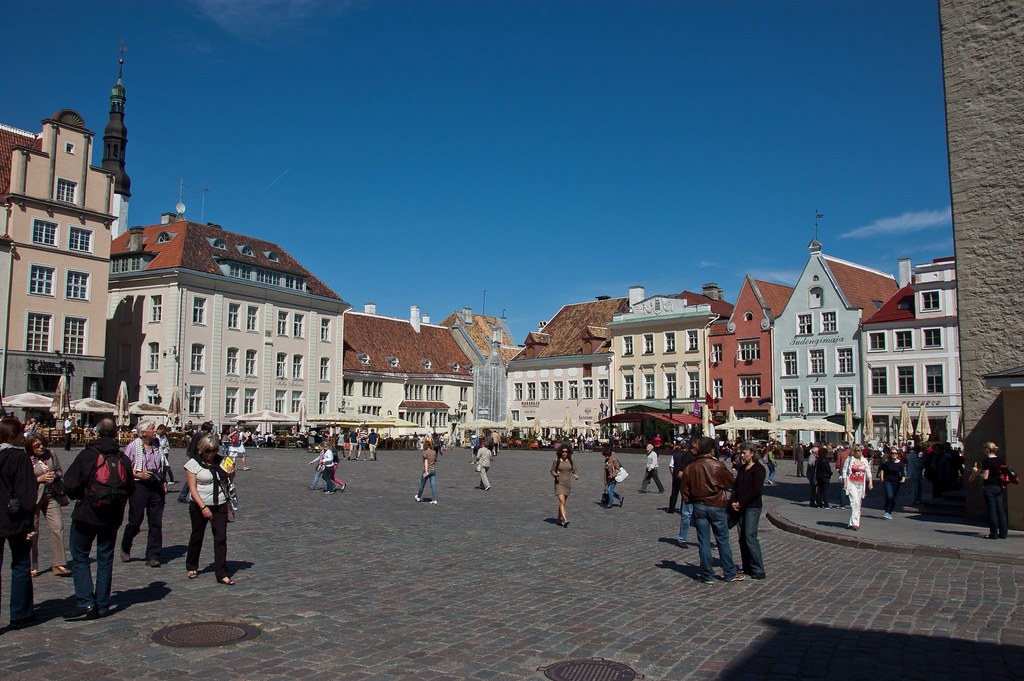 Above: Raekoja plats (Town Hall square), in Tallinn's historic Lower Town.
Above: Raekoja plats (Town Hall square), in Tallinn's historic Lower Town.Since its return to independence, improving air and sea transport links with Western Europe and Estonia's accession to the European Union in 2004 have made Tallinn easily accessible to tourists. Tallinn's Old Town is in the list of UNESCO World Heritage Sites and is the oldest capital city in Northern Europe. The city was known as Reval from the 13th century until the 1920s.
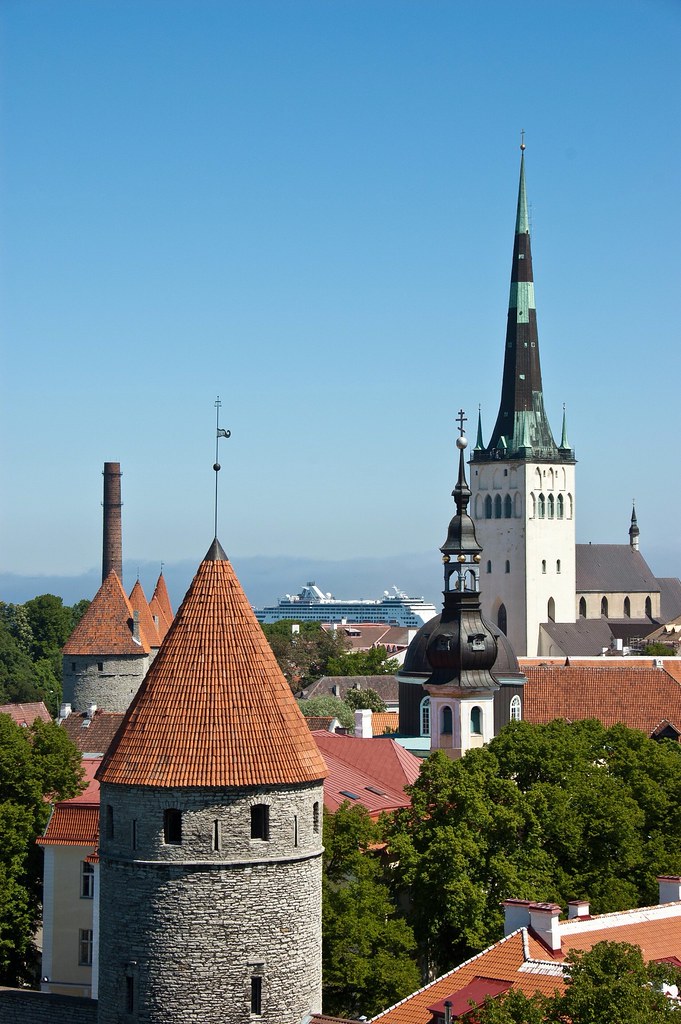 Above: The city wall, the Ryndam and St. Olaf's church - the tallest building in the world from 1549 to 1625.
Above: The city wall, the Ryndam and St. Olaf's church - the tallest building in the world from 1549 to 1625.Tallinn's main attractions are in the two old towns (Lower Town and Toompea) which are both easily explored on foot. Toompea – Upper Town - was once a separate town, the residence of the Chivalry of Estonia, Roman Catholic bishops (until 1561) and Lutheran superintendents of Estonia, occupying an easily defensible site overlooking the surrounding districts.
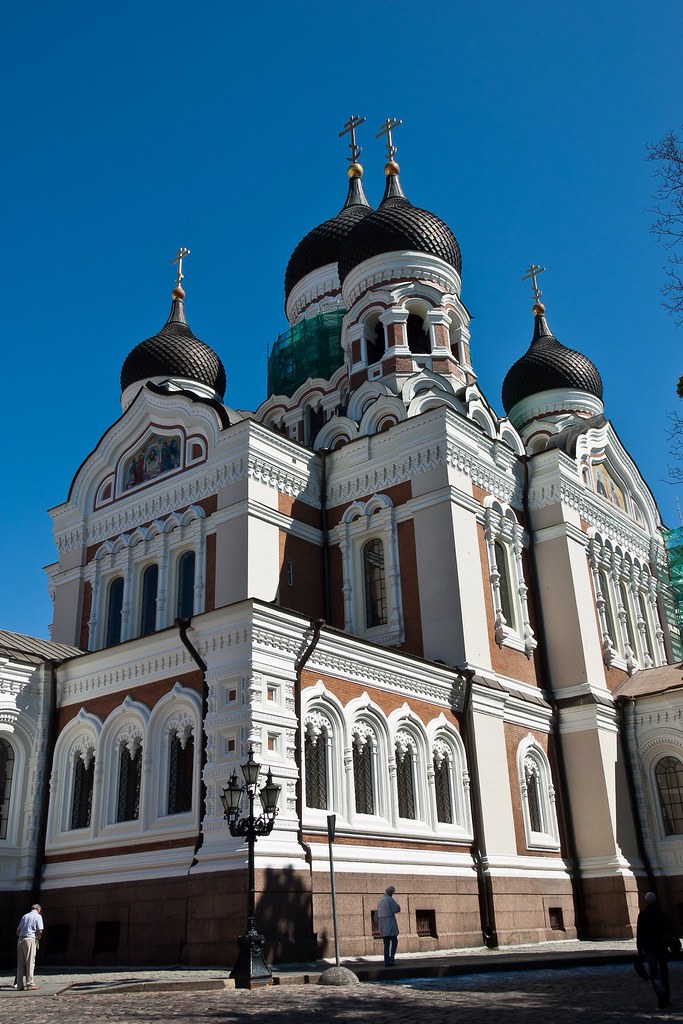 Above: Alexander Nevsky Cathedral built in 1894–1900.
Above: Alexander Nevsky Cathedral built in 1894–1900.One of the major attractions here is the Russian Orthodox Alexander Nevsky Cathedral, built during the period of Russian Empire. The Cathedral was built on a site that formerly housed a statue of Martin Luther.
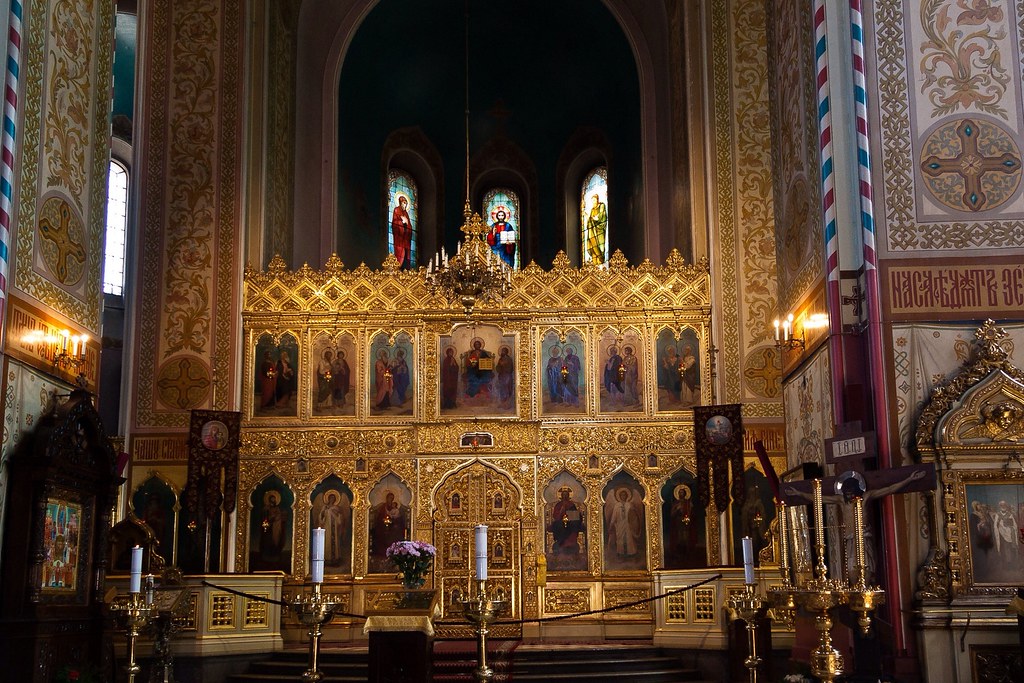 Above: Inside the Alexander Nevsky Cathedral.
Above: Inside the Alexander Nevsky Cathedral.The Estonian government is also based in this part of town, just opposite the Cathedral.
 Above: The Stenbock House – Residence of the Estonian government on Toompea hill.
Above: The Stenbock House – Residence of the Estonian government on Toompea hill.The Lower Town (known as All-linn) is one of the best preserved old towns in Europe and the authorities are continuing its rehabilitation. Major sights include Raekoja plats (Town Hall square), the town walls and towers (notably "Fat Margaret" and "Kiek in de Kök") and the St Olaf Church tower.
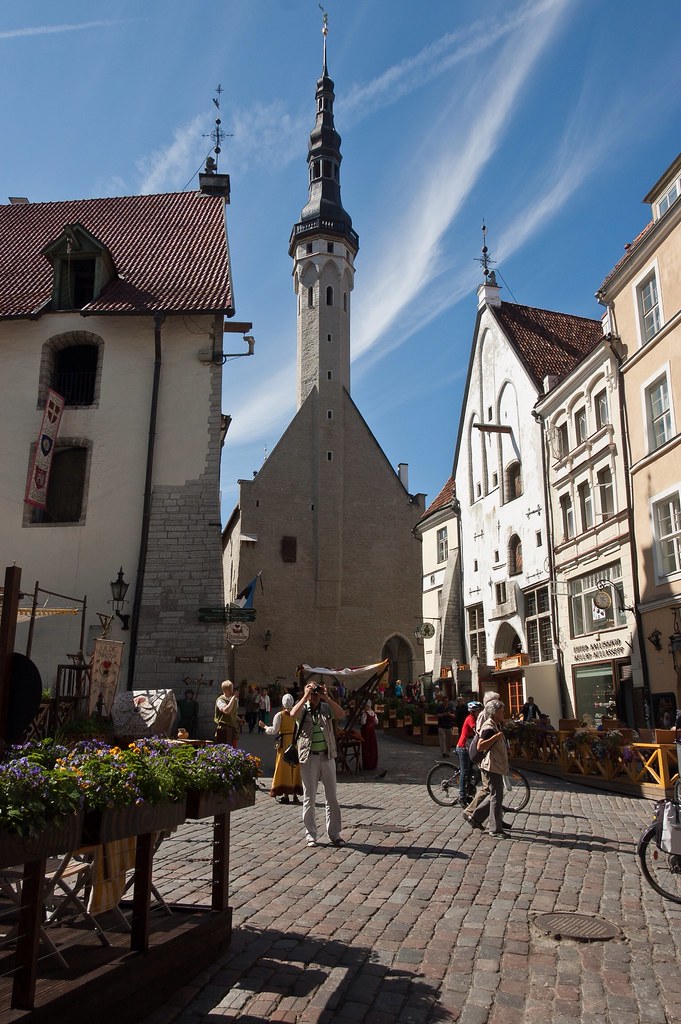 Above: One of the many streets leading off from the Town Hall Square, with the Town Hall centre.
Above: One of the many streets leading off from the Town Hall Square, with the Town Hall centre.Wandering around the streets was like strolling through Disneyland, except that everything was real! Tourism is big business here and restaurants and cafes had servers dressed in Medieval costume, in an effort to grab your attention.
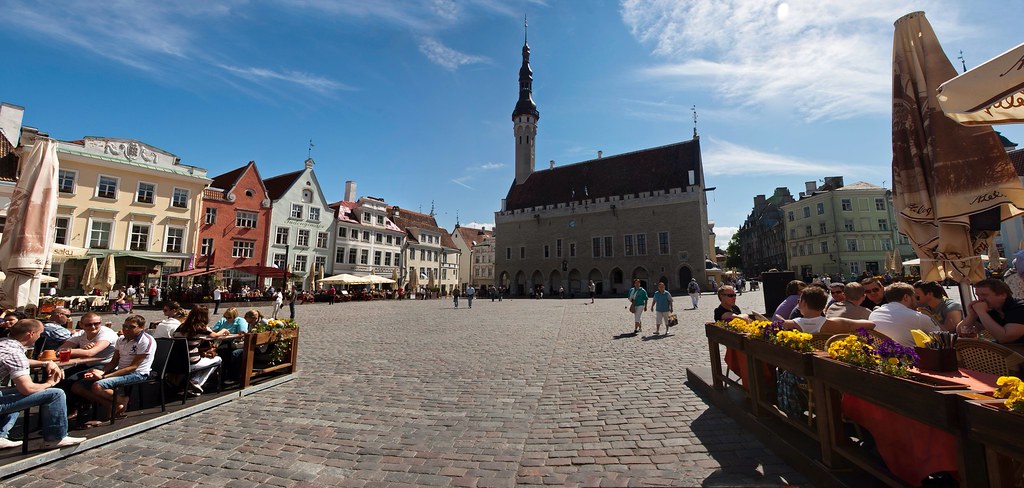 Above: Town Hall Square, lined with restaurants on all sides.
Above: Town Hall Square, lined with restaurants on all sides.I will leave you with a final shot of the city wall that circles old Tallinn. This was an amazing port, and one I would consider visiting again on holiday! I'll be bringing you more Baltic destinations soon.
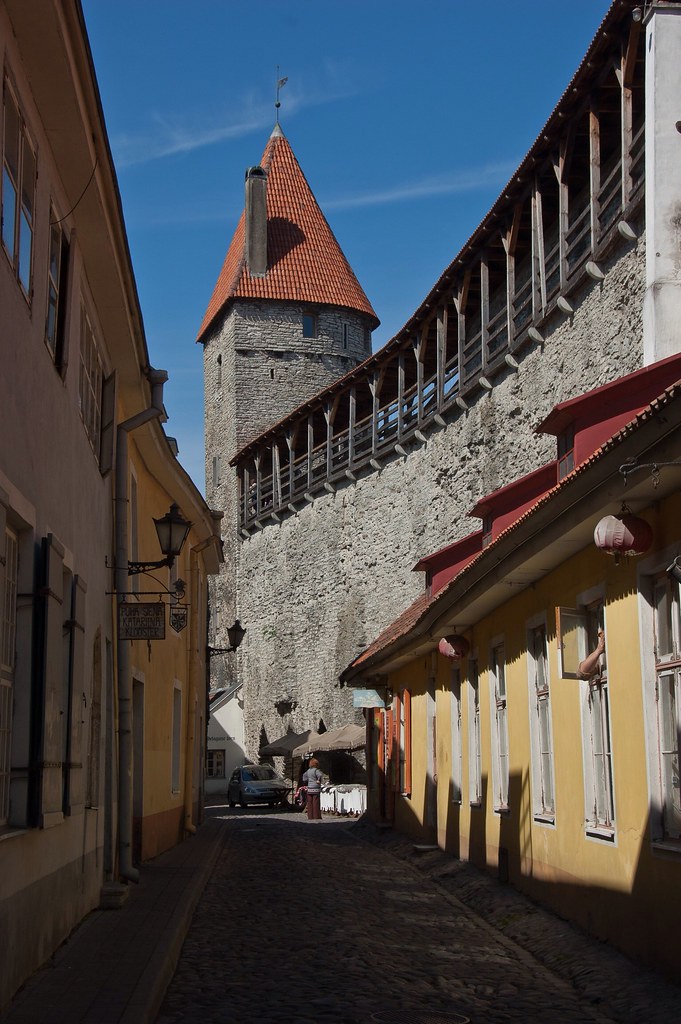 Above: The city wall.
Above: The city wall.
